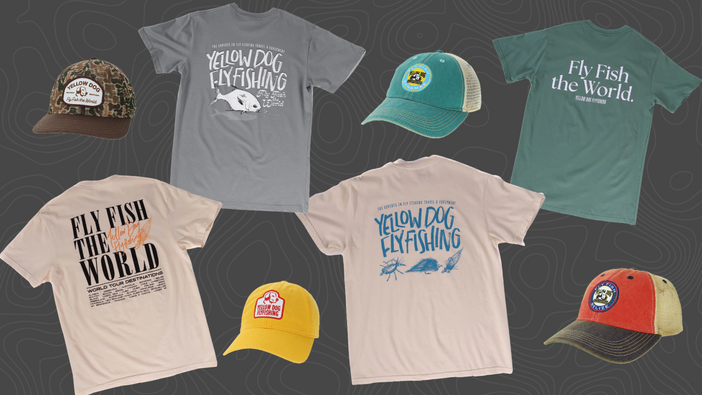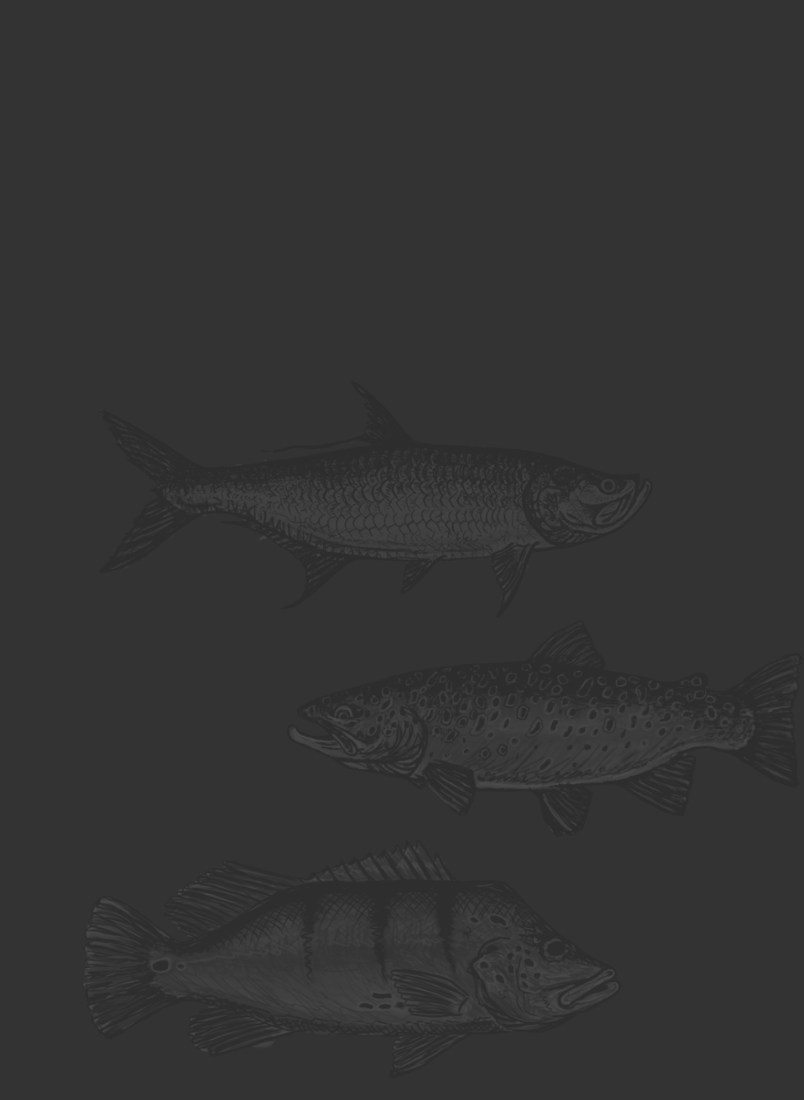Nowhere else in the United States are steelhead as deeply rooted in angling culture as the Pacific Northwest. Mention the Pacific Northwest in a circle of fly fishers and steelhead will inevitably poke their bright dime-colored heads into the conversation. Rivers such as the Rogue, Deschutes, Grande Ronde, Columbia, and Klickitat, to name just a few, have claimed notoriety for producing not only good numbers of steelhead but large ones at that. And as western trout rivers begin sliding into winter month slumbers, for any angler looking to extend their fishing season then winter steelhead in Oregon and Washington should be at the top of the list.
When to go?
Steelhead are an adronomous species meaning they spend part of their lives in the freshwater and part of it in the salt. Steelhead are born in the freshwater and once reaching a few years old will make their way downriver to the ocean.
Over the next few years, steelhead grow to proportions only possible with the vast food supply of the ocean, and will once again return to the freshwater to reproduce. As the name would suggest, winter-run steelhead begin entering the freshwater from the salt as early as November and will stay as late as May.

Where to go?
The Pacific Northwest has a variety of world-class steelhead waters. However, for anglers that want to target winter-run steelhead Washington's Olympic Peninsula is the perfect location.
Washington
The rivers of the Pacific Northwest will transport anglers to a place where time seems to move at a slower pace. Large old-growth deciduous forests dwarf anglers as they swing flies on the green-tinted rivers below. The Olympic Peninsula is widely known as producing some of the largest and wildest steelhead found in the Lower 48. Only a 4 hour drive the Seattle airport, the OP offers convenient travel and access to some world-class steelhead fisheries.

Brazda’s Fly Fishing
If you’ve been looking for an Olympic National Park fishing trip with an outfitter who truly believes that fly fishing is not just a sport but a way of life then a trip with Brazda’s Fly Fishing is a must.
The winter-run steelhead on the Olympic Peninsula have a history of strong returns on rivers that include Sol Duc, Hoh, Bogachiel, Queets, and Calawah and when fishing with Brazda’s crew, you could very well catch the steelhead of your life on any of these waters.
Staying with Brazda's means taking part of an authentic Northwest way of life. The lodge was purchased in 2017 and the family-style setting is warm and inviting. Sit around the dinner table each night over hearty cuisine swapping fishing stories of the day. If you're lucky, maybe you'll wake up to the local elk herd grazing the nearby meadow.
Winter Steelhead Pacific Northwest Rivers
It's difficult to pick just a few, but the following rivers are synonymous with strong returns of steelhead and should be on the list of anyone traveling to the Olympic Peninsula.
Quillayute
Quillayute is six miles long with tributaries that include the Sol Duc, Bogchiel and Calawah. These rivers drain the largest watershed on the northern Olympic Peninsula and collectively hold the healthiest stocks of wild winter steelhead in the Pacific Northwest.
Hoh River
The northernmost of the Olympic Peninsula’s rivers, the Hoh commonly holds wild winter-run steelhead in the 15 to 20-pound range. The steelhead returns on the Hoh have continued to be strong, largely because of the many miles of protected spawning habitat in the upper Hoh drainages that originate in Olympic National Park.

Klickitat River
The Klickitat River starts to fill with summer steelhead as early as July. Swinging flies is typically the best by the middle of September, and the preferred method until the “egg drop” later in the season. The Klickitat is a semi-volatile river, but when the conditions are ideal, the fishing can be awesome. Many anglers would agree that the Klickitat boasts the hardest fighting steelhead in the state.
Methow and Wenatchee Rivers
Both rivers are Upper Columbia River tributaries. The steelhead of the Methow are of the “free rising” strain on the upper Columbia, a term that applies to steelhead that are willing to take dry flies. Steelhead fishing has been opened up once again on the Methow after many years of being closed due to federal wild steelhead protection.
The fishing in the valley is not what it was before dams but has rebounded in recent years due to changes in management by the WDFW and NOAA. There are currently healthy returns of Chinook salmon spawning throughout the system, as well as large native cutthroat, steelhead, and large bull trout.
Who should go?
Fly fishing for steelhead isn’t for everyone, especially for when it comes to chasing these elusive fish in the winter. Temperatures can be chilly and combined with variable weather conditions, think snow and freezing rain, it’s easy to see why hardcore stealheaders are cut from a different cloth.
However, with all that said, landing a steelhead is an incredible experience and one that’s not easily forgot. The reward of hooking up with one of these powerful fish and admiring its beauty in hand has proven addicting for more than one angler. At the end of the day, it’s easy to look past the inclement weather and hours standing in frigid water when you cross paths with one of nature’s treasures of fly fishing.

Preparing for a Steelhead Trip
Preparing for a fly fishing trip to the Pacific Northwest for winter-run steelhead is not so much having the correct rod, line, flies, etc., but more so it’s about having the correct clothes and outerwear. Late October and early November can throw some curveballs when it comes to weather. A good rule-of-thumb is to pack in layers.
If the sun's out then a lightweight fleece or light jacket may be all you need. But if the sun's behind clouds or there's a little moisture in the air, then packing good warm clothes is absolutely necessary. A synthetic base layer, a warm mid-layer, and then a hard shell to keep the rain off are all essential. Make sure to bring that warm hat you have lying around the house.
Lastly, and something that can quickly put a damper on your steelhead trip is leaky waders. Before you leave thoroughly check your waders for any leaks and pinholes. An easy way to find leaks is to turn your waders inside-out and spray the inside with rubbing alcohol.
A dark area will indicate where a pinhole's present. After finding the hole place Aquaseal over the hole, or if necessary use a patch. You'll be thanking yourself when you're standing in cold water and rain or snow start to fall and you're still completely dry.

Pacific Northwest Steelhead Flies
Intruder – Purple and Black
Intruders should be a staple in every steelheaders fly box. Lots of movement and weight is the perfect recipe for a great steelhead fly.
Hobo Spey – Black, Purple, Pink
Developed by Charles St. Pierre, the fly is hands-down our go-to on any steelhead river. Pack a few of these and prepare for the inevitable takes. With lots of movement in the water, these flies are irresistible to fish.
Moal Leech – Purple, Pink, Black / Chartreuse
Designed by Derek Fergus, the Moal (Mother Of All Leeches) Leech has proven time and time again to get the job done for big chromies. The larger-sized leech is perfect for big water and long swings.

Pick ‘Yer Pocket – Purple, Orange, Black
Brian Kite is known widely in steelhead circles and same with his fly. Pick ‘Yer Pocket provides the weight, movement, and displaces enough water to make it look appetizing to any steelhead.
Fish Taco – Black Purple, Pink
You’d be wise to stock a few of these in your steelhead box. The simple yet extremely effective fly has life-like articulation and is effective throughout the PNW and Alaska.
There are few things in life that compare to hooking up with a large powerful winter-run steelhead- the brute strength of the fish will leave anyone wide-eyed. Targeting winter-run steelhead is a terrific way to extend your freshwater season and experience all that Washington's Olympic Peninsula has to offer.
Related Articles:





























